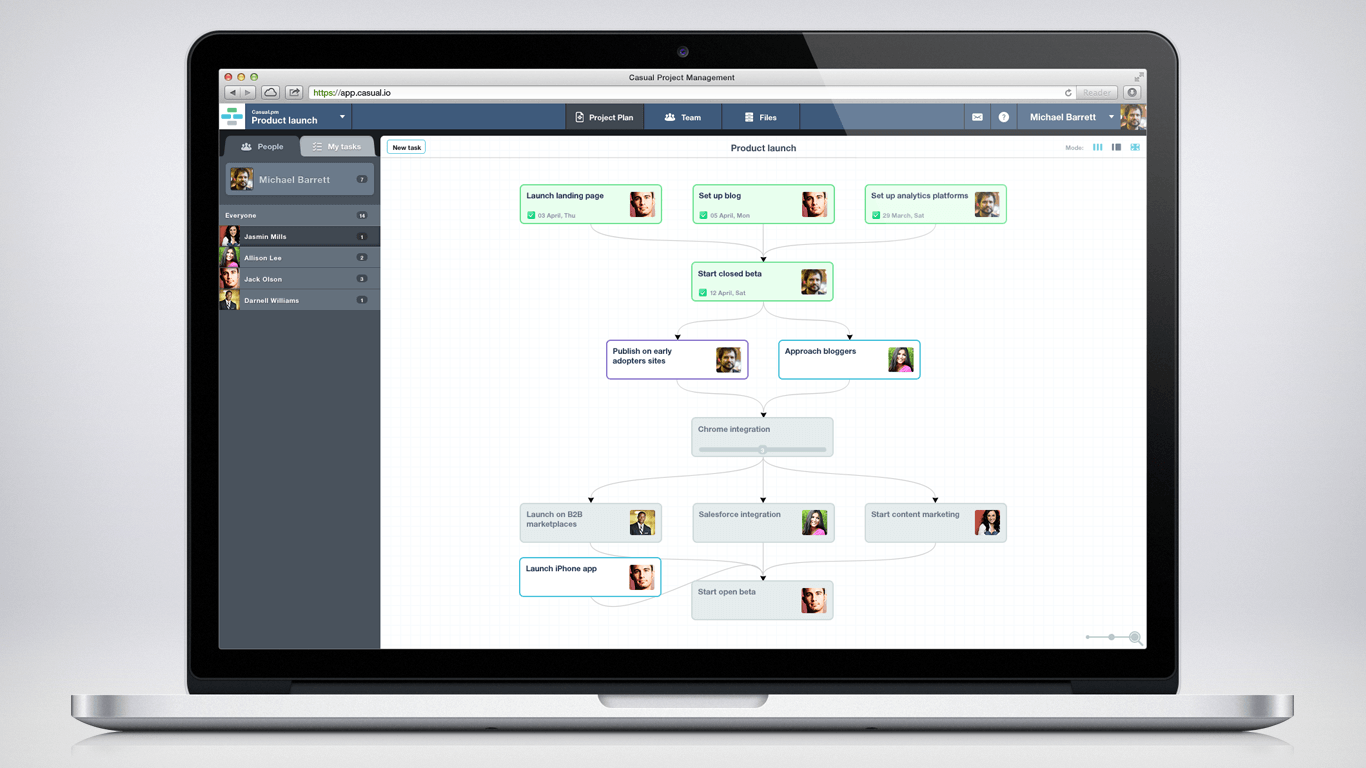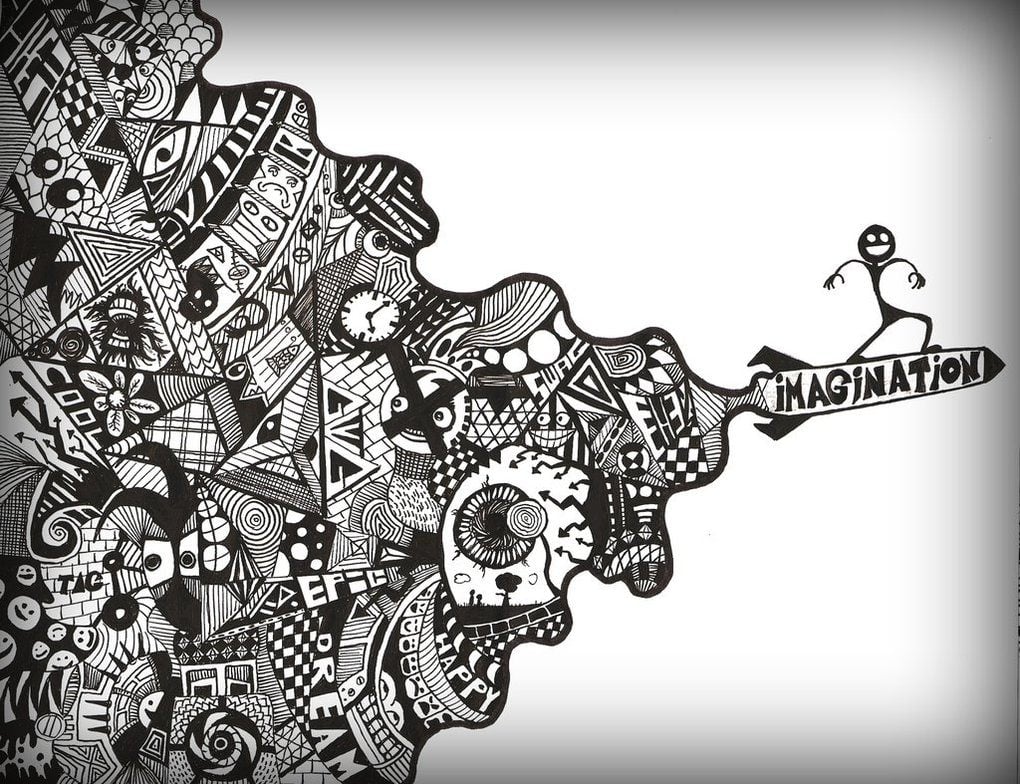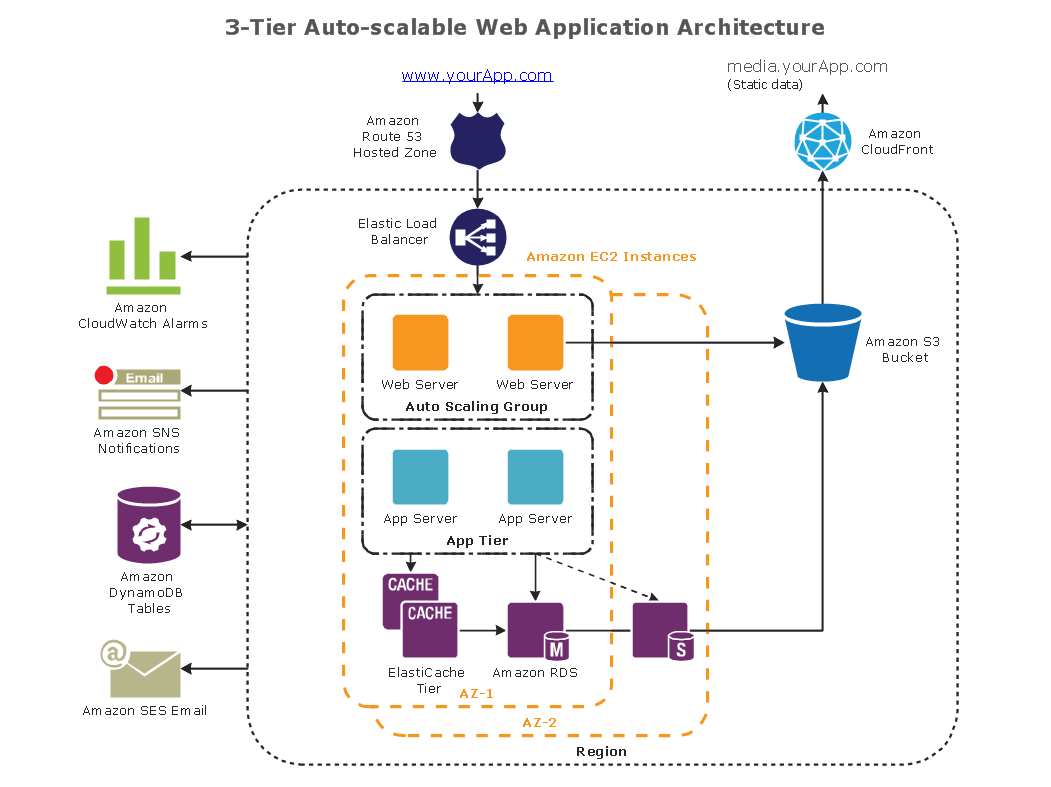A few weeks later, I was called from class, and the same stranger met me in the office. He had more “tests” to give me, because he said I had demonstrated so much creativity with the circle exercise. He explained that he was a college student who was studying “visual thinkers,” and he thought I was one of them. He also told me that I was probably not getting grades as high as some other students, because most teachers don’t teach for visual learners. That was the first time someone had tried to explain to me why I had difficulty learning. Later on it led me to explore just what a visual thinker is – I fit the definition pretty handily! So, here’s a list of 7 things that all of us visual thinkers will understand, and most others probably won’t.
1. We plan our projects and tasks in a different way
While others make lists of things and create great Excel files that speak to the tasks to be completed, we need a big flow chart, with the entire project divided up in a visual representation. When others use project management tools that utilize lists and files, we become frustrated and less productive. If this sounds like you, get another tool. One that I recommend is Casual. This is cloud-based software that lets you draw an entire project, like a large mind map. You can see the whole thing at once and monitor the details of task completion with one large visual flow chart. It’s like this piece of software had our names on it when it was developed!
2. We have huge imagination
We look at a cloud formation and immediately visualize all sorts of scenarios with that shape. While others are busy with their to-do lists, we are seen as lacking in focus, as daydreamers. In reality, we are seeing past images and imagining new ones, so “do not disturb”, please! And if you ask us to come up with solutions, you need to let us be, as our visualizations may just result in the best one. We are great with group math modeling and optimization projects, and if you ask us to help decorate a room for a party, we can “see” the finished product pretty quickly in our “mind’s eye.”
3. We do not write notes, we draw them
If we are listening to a lecture, we don’t write what we hear, we draw it. Our handwriting is usually not that good, but we can draw pictures, charts and other images that will allow us to remember what was said. When we need to give directions to someone, we have to draw them; when we need to explain anything, that explanation will be in the form of a picture. While others are making outlines for their essays and papers in school, we are drawing graphic organizers that make sense to us. If we need to remember to pick up items at the store, we will not make a list – we will draw pictures of the items instead. Because we have a visual picture of the store in our minds, we know just where to go to make “quick work” of that shopping trip. And we don’t memorize the spelling of words phonetically. We can tell if a word is spelled correctly by looking at it.
4. We have the aptitude to invent
Thomas Edison and Einstein were failures in school – labelled mentally deficient. But they “saw” things that others could not and changed our lives forever because of it. While we visual thinkers will not all be as inventive as that, we do come up with some pretty good ideas. Let’s say someone, many years ago, was at a restaurant eating hamburgers. When he turned the ketchup bottle upside down to slather his burger, he had to shake it to bring the ketchup down to the spout. He shared his vision for a new bottle design – a wide cap that could balance the bottle upside down, so that the ketchup was always at the spout when opened. He even wrote a letter to one of the companies suggesting it. A few years later, out came the first ketchup bottle just as he had envisioned it, soon to be followed by several other items – mustard, jelly, mayonnaise, etc. Now, someone at the ketchup company may have come up with the final product, but this wonderful little convenience was actually born in that restaurant.
5. We don’t get tables, but love diagrams
If an instructor draws a benzene ring in chemistry class, or if we can play with Punnett squares in biology, we are in “heaven.” But give us data in a table, or ask us to explain how a bill becomes a law in prose writing, and we will go nuts! Give us a picture, let us absorb and process it in our brains, and we will “have it” cemented in our memory permanently. Years later, we will still be able to visualize that picture of the legislative process.
6. We remember things as images
While others write or speak about their first pets, a significant event in their lives, or someone who has impacted them, we deal with pictures. Those events in our lives become movies playing in our heads as we recall them. Some extreme visual learners, in fact, have such vivid “movies” in their minds that they can recall even the tiniest of details about a scene. Recently, a television series, entitled “Unforgettable,” became quite a hit. The major character was a woman with such extreme visual memory that she became a huge benefit to a team of detectives, as they solved crimes. She went to each crime scene and focused on the “big picture,” but, when necessary, she could recall every detail of the place later on.
7. We are pro-packers
Why? Because while everyone else is trying to stuff things into a suitcase with only marginal success, we have pictured that suitcase and everything that must go in it. We have arranged and re-arranged the items in our heads, over and over, until we have the perfect pattern of placement. We then simply follow our pattern, everything fits perfectly, and we are ready to go! We visual thinkers are imaginative, creative, and divergent in our thinking processes. While we may frustrate others, and even ourselves at times, we are often the most valuable member a team can have!




